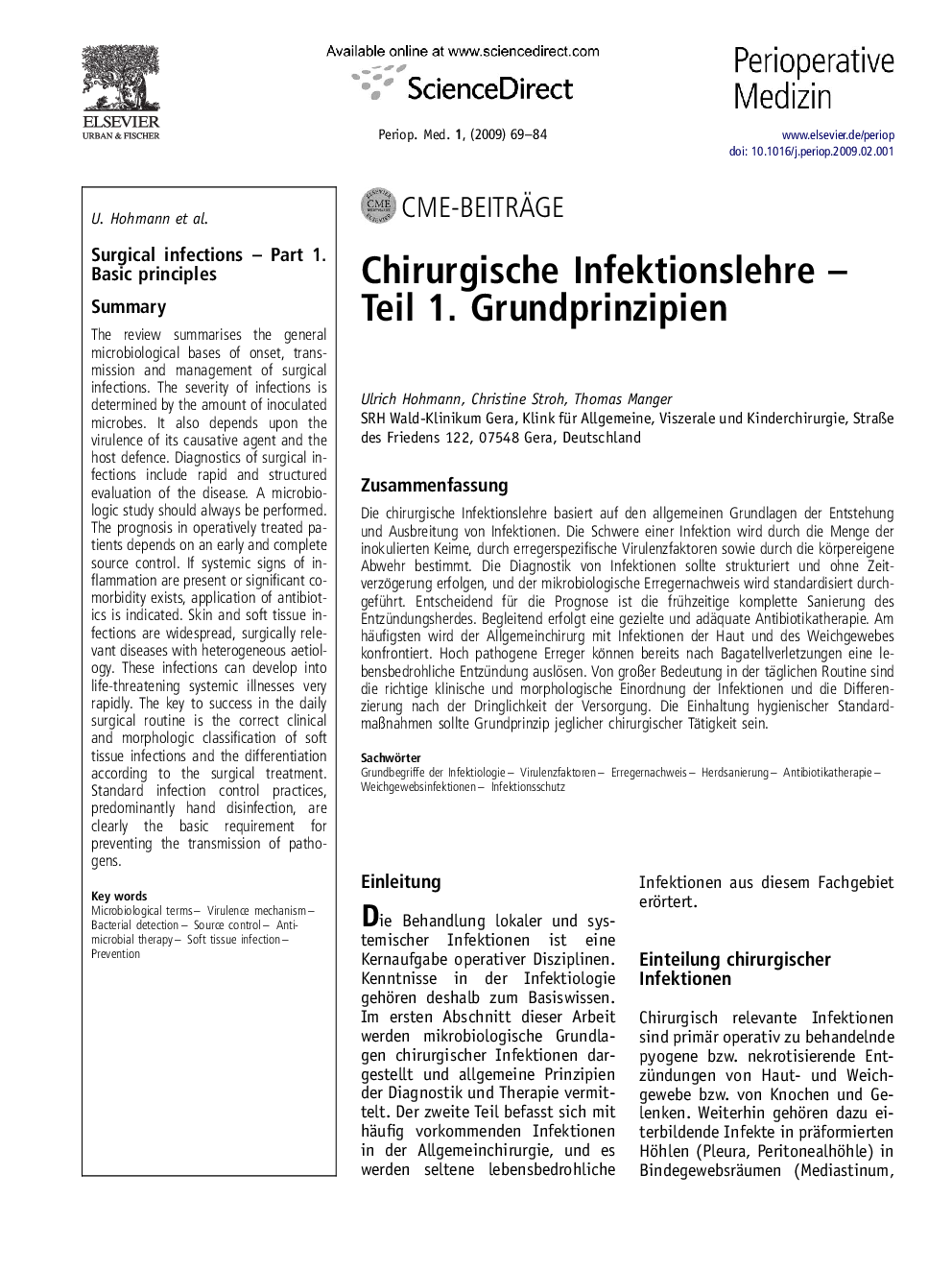| Article ID | Journal | Published Year | Pages | File Type |
|---|---|---|---|---|
| 2766703 | Perioperative Medizin | 2009 | 16 Pages |
ZusammenfassungDie chirurgische Infektionslehre basiert auf den allgemeinen Grundlagen der Entstehung und Ausbreitung von Infektionen. Die Schwere einer Infektion wird durch die Menge der inokulierten Keime, durch erregerspezifische Virulenzfaktoren sowie durch die körpereigene Abwehr bestimmt. Die Diagnostik von Infektionen sollte strukturiert und ohne Zeitverzögerung erfolgen, und der mikrobiologische Erregernachweis wird standardisiert durchgeführt. Entscheidend für die Prognose ist die frühzeitige komplette Sanierung des Entzündungsherdes. Begleitend erfolgt eine gezielte und adäquate Antibiotikatherapie. Am häufigsten wird der Allgemeinchirurg mit Infektionen der Haut und des Weichgewebes konfrontiert. Hoch pathogene Erreger können bereits nach Bagatellverletzungen eine lebensbedrohliche Entzündung auslösen. Von großer Bedeutung in der täglichen Routine sind die richtige klinische und morphologische Einordnung der Infektionen und die Differenzierung nach der Dringlichkeit der Versorgung. Die Einhaltung hygienischer Standardmaßnahmen sollte Grundprinzip jeglicher chirurgischer Tätigkeit sein.
SummaryThe review summarises the general microbiological bases of onset, transmission and management of surgical infections. The severity of infections is determined by the amount of inoculated microbes. It also depends upon the virulence of its causative agent and the host defence. Diagnostics of surgical infections include rapid and structured evaluation of the disease. A microbiologic study should always be performed. The prognosis in operatively treated patients depends on an early and complete source control. If systemic signs of inflammation are present or significant co-morbidity exists, application of antibiotics is indicated. Skin and soft tissue infections are widespread, surgically relevant diseases with heterogeneous aetiology. These infections can develop into life-threatening systemic illnesses very rapidly. The key to success in the daily surgical routine is the correct clinical and morphologic classification of soft tissue infections and the differentiation according to the surgical treatment. Standard infection control practices, predominantly hand disinfection, are clearly the basic requirement for preventing the transmission of pathogens.
